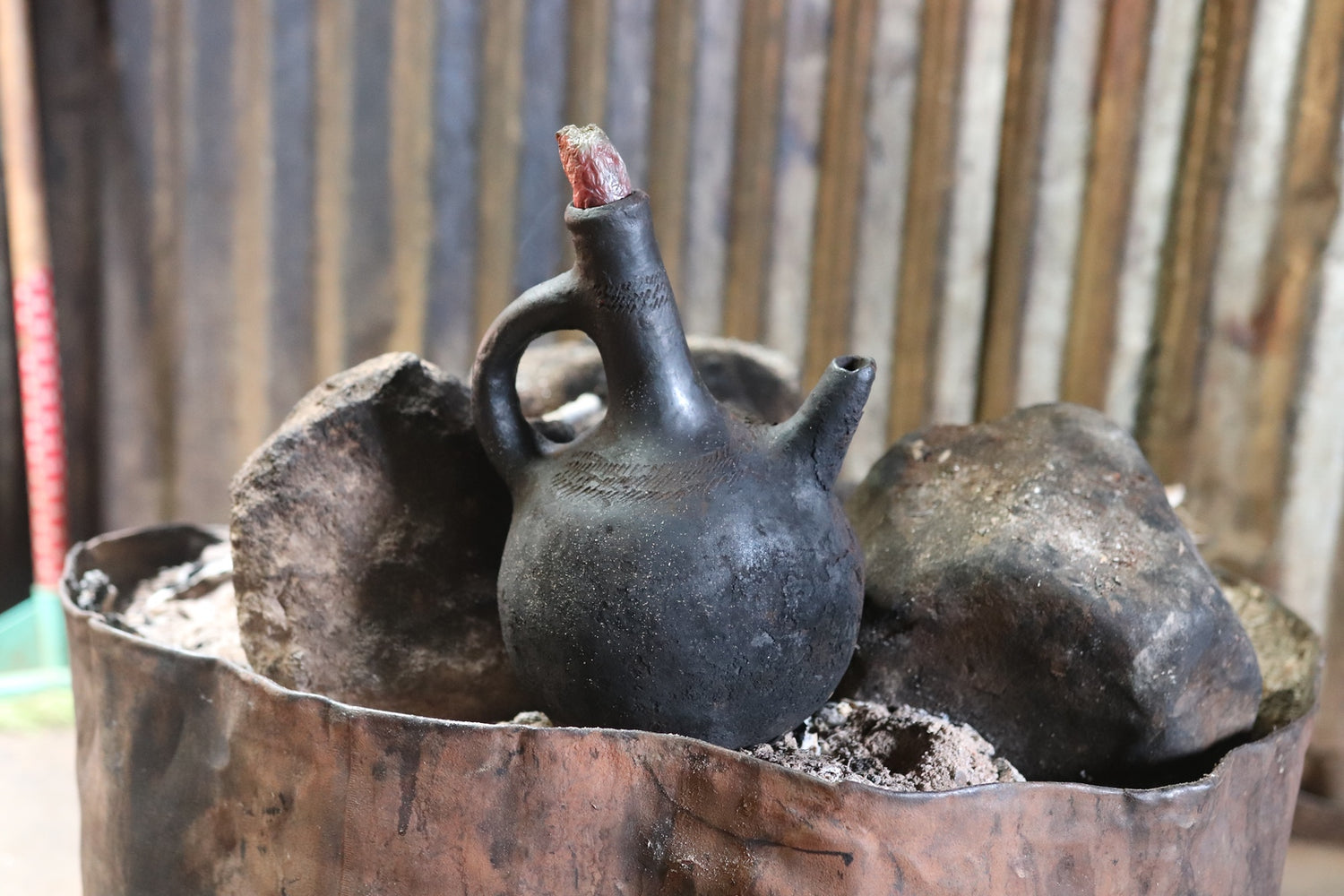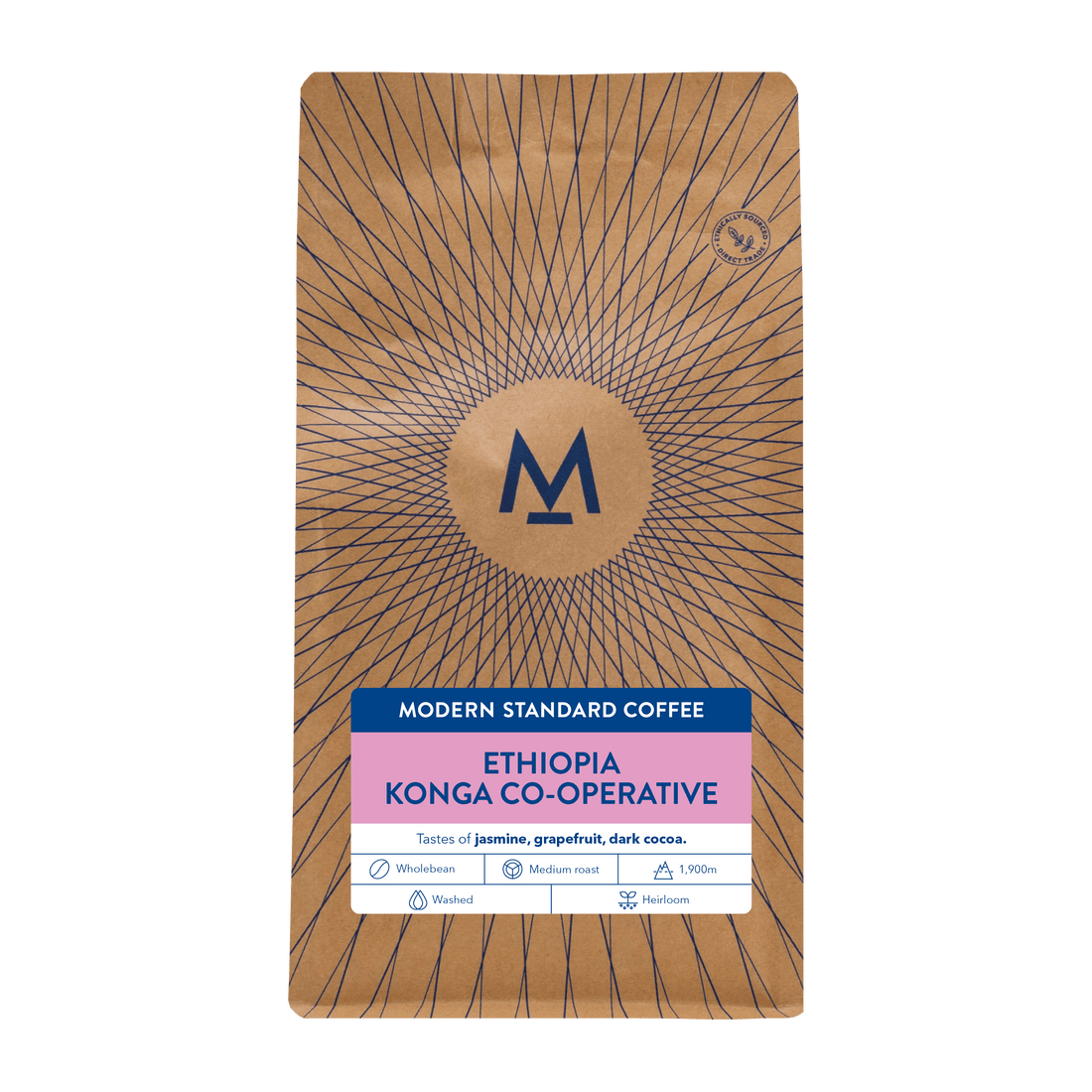



The overview
| Countries of origin | Ethiopia |
| Producer | Konga Co-operative |
| Altitude | 1900 - 2300m |
| Varietal | Heirloom |
| Process | Washed |
The producers
The Konga cooperative is one in a network of cooperatives in the Yirgacheffe region belonging to the Yirgacheffe Coffee Farmers Cooperative Union (YCFCU). Its 2,400 smallholder members distinguish themselves with their impeccable attention to detail in processing.
The coffee
Ethiopian heirloom varietals are chosen from the forest and transplanted to small gardens, adding a layer of selection to the incredible complexity available among wild coffee plants.
Firstly, the farmers hand sort the coffee for unripe and overripe coffee cherries. Then the coffee is pulped and wet fermented for 24 to 36 hours. After some sorting based on density, the fermented coffee is washed in clean water before drying for one to two weeks on cloth drying beds. Finally, the workers cover the coffee with plastic at midday and at night. Once the coffee is dried it is screened for size 14 upwards.
As part of the cooperative's mission to give back to its community it recently renovated buildings at a primary school and outfitted it with new supplies.
Why we love it
Roasting coffee day in and day out, you really start to appreciate great coffees. Ethiopian Konga Co-Op has always been a real treat; floral notes and lots of chocolate, it's my go to when I brew up a batch for the roastery team.
Zak's Brew Guide
Out: 31-33g
Time: 24-26s
Water: 305g
Ratio: 1:17
With Ethiopian coffees, expect this coffee to have a lot of floral notes and bright acidity. Best enjoyed without milk.


Yirgacheffe Coffee Farmers Cooperative Union
Representing over 46,094 farmers, Yirgacheffe coffee farmer’s cooperative union is established in June 2002. Its 28-member cooperative are located in Gedeo Zone in Southern Ethiopia, one of the most prominent coffee growing regions in the country & the only source of Yirgacheffe coffee.
The 62,004 hectares dedicated to garden coffee produce on average around 20,000 metric tons of Yirgacheffe washed and sun-dried coffee per year.
Key Facts
On average these gardens produce 15,500 tons of green coffee each year.
The union has played a very important role to improve the livelihoods of all its members. Before the union was established, the cooperatives were not able to access finance due to political interference.
Thankfully now, the situation is very different, and the union actively tries to solve problems and help cooperatives become financially stable and sustainable.

Ethiopian Coffee
Ethiopia’s long coffee history predates written records. Arabica plants are native to Ethiopia, and many of the Arabica varieties now cultivated worldwide have their genetic roots in wild coffee growing in Ethiopian forests. With such easy access to wild-growing coffee, it is undoubtable that early people in Ethiopia consumed coffee for centuries before it became the global beverage that it is today.
The long tradition of coffee in Ethiopia has continued into the modern day. Coffee drinking is widespread in both social and cultural contexts and has a place at a wide range of social events. Nearly half of all coffee produced in the country is consumed on the domestic market. That’s no small feat for a country that produces some 860 million pounds of green coffee beans annually














